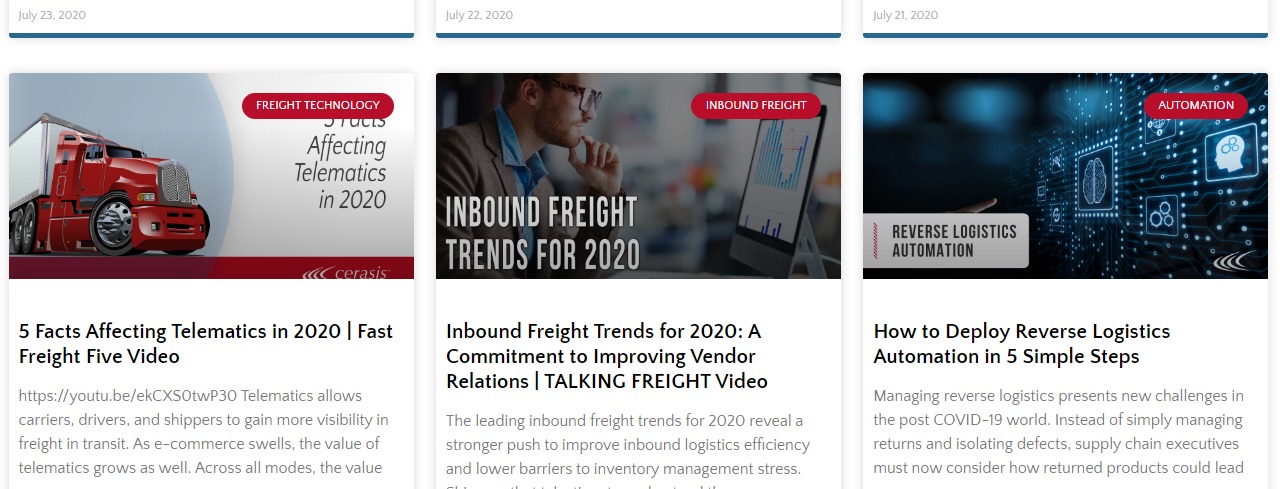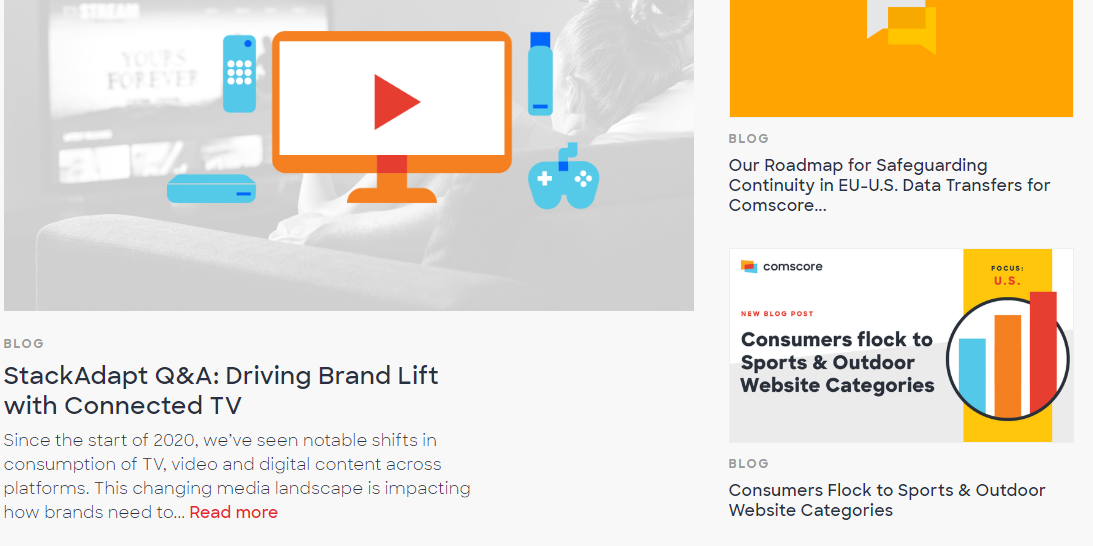
by Jennifer Hart Yim | Jan 29, 2025 | Logistics, Paid Advertising
Having a strong digital presence is no longer optional. Pay-Per-Click (PPC) advertising is a powerful tool for logistics companies looking to quickly generate quality leads and expand their client base.
Here, we walk you through everything you need to know about implementing a successful PPC strategy for your logistics business.
Why PPC Matters for Logistics Companies
The logistics industry operates in a highly competitive space where timing and visibility are crucial. PPC advertising offers several unique advantages for logistics companies:
- Immediate visibility in search results when potential clients are actively searching for logistics services
- Precise targeting capabilities to reach specific industries, locations, and decision-makers
- Measurable ROI through advanced tracking and analytics
- Flexibility to adjust campaigns based on seasonal demands and market changes
Key PPC Strategies for Logistics Companies
1. Strategic Keyword Selection
Success in PPC begins with targeting the right keywords. For logistics companies, focus on:
Transportation-specific terms:
- “freight forwarding services”
- “international shipping solutions”
- “supply chain management”
- “warehousing and distribution”
Location-based keywords:
- “[city] logistics company”
- “shipping services in [region]”
- “local freight forwarding”
Service-specific terms:
- “temperature-controlled shipping”
- “hazmat transportation”
- “last-mile delivery solutions”
2. Creating Compelling Ad Copy
Your ad copy needs to address the specific pain points of your target audience while highlighting your unique value proposition. Consider these elements:
- Include relevant certifications and compliance standards
- Emphasize your experience and track record
- Highlight specialized services or equipment
- Showcase your geographic coverage
- Include clear calls-to-action (CTAs)
3. Landing Page Optimization
The success of your PPC campaigns heavily depends on your landing pages. Ensure they:
- Load quickly and are mobile-responsive
- Feature clear value propositions above the fold
- Include trust indicators (certifications, client logos, testimonials)
- Offer multiple contact options
- Contain relevant content that matches the ad’s promise
4. Advanced Targeting Techniques
Maximize your ROI by utilizing advanced targeting options:
Geographic Targeting:
- Target specific service areas
- Adjust bids based on location performance (this one has proven to be particularly successful for our clients)
- Focus on high-value markets
Audience Targeting:
- Create custom audiences based on website visitors
- Target similar audiences to your existing clients
- Depending on your services, you may be able to use in-market audiences to target
Device Targeting:
- Optimize campaigns for both desktop and mobile users
- Adjust bids based on device performance
- Create device-specific ad copy
Measuring and Optimizing Your PPC Campaigns
Key Performance Indicators (KPIs)
Track these essential metrics to measure campaign success:
- Click-Through Rate (CTR)
- Conversion Rate
- Cost Per Lead (CPL)
- Return on Ad Spend (ROAS)
- Quality Score
- Average Position
Optimization Strategies
Continuously improve your campaigns by:
- Regularly reviewing search term reports to identify new keywords
- A/B testing ad copy and landing pages (even changing one word could improve your CTR)
- Adjusting bids based on performance data
- Optimizing for mobile experience
- Refining audience targeting based on performance data
Common PPC Mistakes to Avoid
Please, don’t do these. These things waste your budget:
- Neglecting negative keywords
- Using overly broad match types
- Ignoring mobile optimization
- Not tracking conversions properly
- Failing to test ad variations
- Overlooking quality score optimization
Budget Planning and Management
Effective budget management is crucial for PPC success:
- Start with a conservative budget to gather data
- Allocate more budget to top-performing campaigns
- Consider seasonal trends in the logistics industry
- Set aside budget for testing new approaches
- Monitor and adjust bids regularly
Future Trends in Logistics PPC
Wanna be with the cool kids? Stay ahead of the curve by testing these emerging trends:
- AI-driven automation in campaign management (yes, even daily budget management)
- Voice search optimization
- Enhanced audience targeting capabilities
- Integration with CRM systems
Conclusion
Remember that PPC is not a “set it and forget it” solution. Regular monitoring, testing, and optimization are essential for maintaining and improving campaign performance over time.
Need help with your logistics company’s PPC campaigns? Contact our team.
Read more:

by Elizabeth Hines | Jan 22, 2025 | Marketing, SEO, Website Development
In a fiercely competitive market, standing out in search results is crucial for any supply chain website’s success. One powerful yet often overlooked tool in the SEO arsenal is FAQ schema markup. This guide will dive deep into what FAQ schema markup is, why it matters, and how to implement it effectively to enhance your search visibility.
In this post:
What is FAQ Schema Markup?
FAQ schema markup is a code snippet that helps search engines understand that a particular section of your webpage contains frequently asked questions and answers. When implemented correctly, it enables your content to appear in rich results on Google’s search engine results pages (SERPs), potentially displaying your FAQs directly in the search results.
This enhanced visibility can significantly increase your click-through rates and establish your website as an authoritative source of information in your industry.
Why Should You Implement FAQ Schema?
The benefits of implementing FAQ schema markup extend beyond just improved visibility:
1. Enhanced SERP Real Estate: Your content can occupy more space in search results through rich snippets, pushing competitors further down the page.
2. Improved User Experience: Users can find answers to their questions directly in search results, leading to better engagement when they click through to your site.
3. Voice Search Optimization: FAQ schema markup makes your content more accessible to voice search queries, an increasingly important factor in modern SEO.
4. Higher Click-Through Rates: Rich results tend to attract more clicks than standard search results, potentially driving more traffic to your website.
How to Create FAQ Schema Markup
Creating FAQ schema markup involves structuring your data in a way that search engines can understand. Here’s a step-by-step guide:
Step 1: Prepare Your FAQ Content
Before implementing the schema, ensure your FAQ content is well-organized and valuable to users. Each question should have a clear, concise answer that provides genuine value.
Step 2: Generate the Schema Code
Your FAQ schema should follow this basic structure:
“`json
{
“@context”: “https://schema.org”,
“@type”: “FAQPage”,
“mainEntity”: [{
“@type”: “Question”,
“name”: “What is your first question?”,
“acceptedAnswer”: {
“@type”: “Answer”,
“text”: “This is the answer to your first question.”
}
},
{
“@type”: “Question”,
“name”: “What is your second question?”,
“acceptedAnswer”: {
“@type”: “Answer”,
“text”: “This is the answer to your second question.”
}
}]
}
“`
Step 3: Implement the Markup
You have several options for adding the schema to your website:
1. Direct HTML Implementation: Add the schema directly to your HTML using a script tag with type=”application/ld+json”. Yes, it sounds scary, but a little HTML knowledge will get you really far.
2. Google Tag Manager: Implement the schema through GTM if you prefer a more manageable approach
3. CMS Plugins: If you’re using WordPress or another CMS, you can use plugins designed for schema implementation
Step 4: Validate the markup
After implementation, always validate your schema markup using Google’s Rich Results Test tool or Schema.org Markup Validator.
Best Practices for FAQ Schema
To maximize the effectiveness of your FAQ schema markup:
1. Keep Questions Focused
Each question should address a specific topic or concern relevant to your audience.
2. Provide Comprehensive Answers
Ensure answers are detailed enough to be helpful but concise enough to be digestible.
3. Maintain Consistency
The questions and answers in your schema should match the visible content on your page exactly.
4. Regular Updates
Keep your FAQ content fresh and updated as new questions arise or information changes.
Testing Your Implementation
Before going live, always validate your FAQ schema markup:
1. Use Google’s Rich Results Test tool to ensure your markup is correctly implemented
2. Check the Schema Markup Validator (schema.org) for additional validation
3. Monitor your Google Search Console for any schema-related errors or warnings
Common Pitfalls to Avoid
When implementing FAQ schema markup, watch out for these common mistakes:
1. Marking up content that isn’t visible on the page
2. Including promotional content in answers
3. Using the same FAQ markup across multiple pages
4. Failing to update schema when content changes
Measuring Success
Track the performance of your FAQ schema implementation through:
1. Google Search Console: Monitor rich result impressions and clicks
2. Analytics: Track changes in organic traffic and user behavior
3. SERP Tracking: Monitor your visibility for targeted keywords
And, because I love to be meta like that, I’ve created an FAQ section here as an example!
Frequently Asked Questions
Does FAQ schema markup work on all types of websites?
FAQ schema markup can be implemented on any website that provides informational content through a question-and-answer format. However, it’s particularly effective for service pages, product pages, and knowledge base articles where users commonly seek specific information. In other words, supply chain-related content is ideal!
How many FAQs should I include in my schema markup?
While there’s no strict limit, it’s recommended to include between 5-10 relevant questions per page. Focus on quality over quantity, and ensure each FAQ addresses a genuine user query. Too many FAQs might dilute the impact and could potentially be seen as spam by search engines.
Can I use FAQ schema markup on multiple pages of my website?
Yes, you can implement FAQ schema markup on multiple pages, but each page should have unique questions and answers relevant to that specific page’s content. Avoid duplicating FAQ content across different pages, as this could diminish its SEO value.
How long does it take to see results from FAQ schema markup?
The time to see results can vary depending on various factors, including your website’s authority, crawl frequency, and competition. Typically, you might start seeing rich results within a few days to a few weeks after implementation, assuming your markup is correctly implemented and validated.
Do I need technical expertise to implement FAQ schema markup?
While basic knowledge of HTML and JSON-LD is helpful, you don’t necessarily need deep technical expertise. Many content management systems offer plugins or tools that can help you implement FAQ schema markup without coding. However, it’s recommended to have a technical person review the implementation to ensure accuracy.
Can FAQ schema markup negatively affect my SEO?
When implemented correctly, FAQ schema markup won’t negatively affect your SEO. However, improper implementation, such as marking up hidden content or using irrelevant questions, could potentially lead to penalties. Always follow Google’s structured data guidelines and focus on providing valuable content to users.
Should I update my FAQ schema markup regularly?
Yes, it’s recommended to review and update your FAQ schema markup periodically. This includes adding new relevant questions, updating outdated answers, and removing irrelevant content. Regular updates help maintain the accuracy and effectiveness of your FAQ rich results.
FAQ schema markup is a powerful tool for improving your search visibility and providing value to users. By following these guidelines and best practices, you can effectively implement FAQ schema markup and gain a competitive edge in search results. Remember to regularly review and update your FAQ content and schema implementation to maintain its effectiveness and relevance.
Remember, while schema markup is important for SEO, the ultimate goal is to provide value to your users. Focus on creating high-quality, relevant FAQ content that genuinely addresses your audience’s needs, and the SEO benefits will naturally follow.
Read more:

by Jennifer Hart Yim | Jan 8, 2025 | Marketing, Packaging
We’re showing you exactly how packaging companies we’re working with are using account-based marketing (ABM) to increase market share, shorten sales cycles, and win more strategic accounts. Consider this a packaging professional’s blueprint for target account success.
What is Account-Based Marketing for the Packaging Industry?
Account-based marketing is a strategic approach that focuses marketing and sales resources on specific high-value accounts rather than broad market segments. This means targeting key accounts with personalized campaigns that address their unique packaging challenges, sustainability goals, and innovation needs.
Here’s an example of what that could look like for a packaging marketer:
If consumers in Brazil begin demanding smaller milk carton sizes to reduce food waste, packaging companies might use traditional marketing to broadly promote “flexible filling solutions” to all dairy manufacturers. Instead, an aseptic packaging provider could use account-based marketing to stand out and create a highly targeted campaign for Nestlé. This campaign could specifically address Nestlé’s need to fill multiple carton sizes (500ml, 750ml, and 1000ml) for their Molico and Ninho UHT milk brands on a single production line.
Unlike traditional marketing, ABM delivers:
- 2x higher engagement rates with technical decision-makers
- 42% reduction in packaging qualification cycles
- 27% increase in contract values
- 35% improvement in customer retention
How to Build a Winning ABM Strategy
1. Define Your Ideal Customer Profile (ICP)
Success in ABM starts with identifying the perfect packaging customer. Here are some ways you can start to categorize their characteristics:
Industry Focus:
- Food and beverage manufacturers
- Pharmaceutical companies
- Consumer packaged goods (CPG)
- Industrial products
- Chemical companies
- E-commerce retailers
- Automotive suppliers
Operational Characteristics:
- Production volumes and capacity
- Geographic footprint
- Technical requirements
- Regulatory frameworks
- Sustainability commitments
Business Indicators:
- Annual packaging spend
- Growth trajectory
- Innovation appetite
- Quality standards
- Compliance needs
2. Select and Prioritize Target Accounts
Develop a tiered approach to account selection:
Tier 1: Strategic Accounts
- Major CPG companies
- Global pharmaceutical manufacturers
- Leading food and beverage brands
Tier 2: Growth Accounts
- Regional packaging buyers
- Emerging brands
- Contract manufacturers
Tier 3: Scale Accounts
- Local manufacturers
- Specialty product makers
- Start-up brands
3. Map the Packaging Decision-Making Unit
Here’s where you’ll determine who you’ll be targeting. Identify and engage with those key stakeholders. They could be part of any of the following functions:
Technical Team
- Packaging Engineers
- R&D Directors
- Quality Assurance Managers
Commercial Team
- Procurement Directors
- Supply Chain Managers
- Sustainability Officers
Executive Level
- Operations Directors
- Innovation Leaders
- C-Suite Decision Makers
Content for Account-Based Marketing for the Packaging Industry
Technical Content
Develop materials that showcase your packaging expertise:
- Barrier performance studies comparing EVOH vs. metallized films for snack packaging
- Technical specifications for child-resistant pharmaceutical blister packs
- FDA compliance guides for direct-food-contact packaging materials
- Innovation roadmaps for smart packaging with NFC technology
- Sustainability impact reports on PCR content in HDPE bottles
Commercial Content
Create content that drives packaging business decisions:
- Cost calculators comparing glass vs. PET bottles for beverage lines
- Production efficiency studies for servo-driven cartoning machines
- Risk analyses of aluminum foil supply chain disruptions
- Market trends in mono-material flexible packaging adoption
- Benchmarks of European vs. US sustainable packaging regulations
Implementing Your Packaging ABM Program
Essential Tools and Technologies
Invest in the right technology stack:
- ABM platforms for account targeting
- CRM systems for relationship management
- Marketing automation for personalization
- Analytics tools for performance tracking
- Technical collaboration platforms
Multi-Channel Engagement Strategy
Coordinate your outreach across channels:
- Technical consultations
- Innovation workshops
- Sustainability forums
- Digital demonstrations
- Industry events
- Direct mail campaigns
Measuring the Success of Account-Based Marketing for the Packaging Industry
Key Performance Indicators
Track these critical metrics:
- Account engagement scores
- Technical trial conversion rates
- Sales cycle duration
- Contract win rates
- Customer lifetime value
- Innovation adoption rates
ROI Calculation Framework
Measure your ABM investment returns:
- Cost per account engagement
- Revenue per target account
- Marketing qualified account (MQA) conversion
- Technical qualification success rates
- Long-term contract values
Common ABM Challenges (+ Solutions) Packaging Professionals Face
Challenge 1: Long Technical Qualification Cycles
Example solutions:
- Provide rapid prototyping of thermoformed packages using 3D-printed molds
- Offer accelerated shelf-life testing for new barrier materials
- Supply preliminary migration testing data for food-contact materials
- Create digital twins of packaging lines for virtual testing
Challenge 2: Multiple Stakeholder Alignment
Example solutions:
- Develop sustainability scorecards that satisfy both procurement and ESG teams
- Create ROI models that connect packaging automation with labor savings
- Build material transition roadmaps that align with corporate sustainability goals
- Provide comparative LCA (Life Cycle Assessment) data for different packaging options
Challenge 3: Complex Approval Processes
Example solutions:
- Map decision workflows
- Create milestone-based content
- Offer phased implementation plans
Top Tips for ABM Success
- Start with a pilot program focusing on 5-10 key accounts
- Invest in technical expertise and support
- Align sales and technical teams early
- Focus on sustainability and innovation
- Measure and adjust continuously
How to Get Started
- Assess your current account relationships
- Identify your top 10 target accounts
- Map stakeholders and decision processes
- Develop your technical content strategy
- Implement tracking and measurement systems
Questions We’ve Gotten from Packaging Professionals About ABM
Q: Can you give me an example of how ABM is different from traditional packaging marketing?
A: While traditional marketing might broadly promote your shrink sleeve capabilities to all beverage companies, ABM would create a targeted campaign specifically for Coca-Cola’s Southeast Asia expansion, addressing their specific need, sustainability, and localization requirements. This focused approach delivers personalized engagement at every level of their decision-making process.
Q: What budget should packaging companies allocate to ABM?
A: The most successful ABM programs are funded at about 15-25% of the total marketing budget. For example, a flexible packaging manufacturer might allocate $200,000 annually to target 10 key CPG accounts, with roughly $20,000 per account for technical content development, prototype creation, and specialized testing programs.
Q: How long does it take to see results?
A: You’ll start to see the needle move within 3-6 months. For example, you might notice increased participation in packaging innovation workshops or material qualification trials. Significant revenue impact typically occurs within 9-12 months, as seen in new packaging format adoptions or multi-year supply agreements.
Q: Which metrics matter most?
A: Focus on account engagement scores, technical qualification rates, sales cycle duration, and contract values.
Q: How can smaller packaging companies implement ABM?
A: Start with a focused program targeting 3-5 key accounts and leverage digital automation tools for efficiency and AI tools to scale.
Want to change how your packaging company targets high-value prospects and land major accounts? We’re happy to help you get started. Get in touch.
Read more:

by Jennifer Hart Yim | Jan 6, 2025 | Data/Analytics, Marketing, Strategy
The C-suite demands more than vanity campaign metrics—they require clear evidence of marketing’s contribution to revenue growth, profitability, and market share expansion. The most successful supply chain marketers have mastered a crucial skill: translating marketing activities into the language of financial outcomes.
Bridging the Gap Between Marketing and Finance
How can you be sure, really sure, that you are demonstrating concrete business value to the C-suite? While traditional marketing metrics like engagement rates and lead generation are always top of mind for marketing folks, securing executive support is really about speaking the language of financial outcomes and business growth.
Why Supply Chain Marketing Metrics Need a Financial Bent
The disconnect between marketing activities and financial outcomes often creates skepticism among executive leadership. Marketers must change their reporting from activity-based metrics to revenue-focused outcomes. This shift isn’t just about changing terminology—it’s about fundamentally reframing how marketing creates measurable business value.
How to (Effectively) Demonstrate Supply Chain Marketing ROI
1. Prioritize ROI Over Activity Metrics
Transform your reporting approach from campaign-centric to outcome-focused. Instead of: “Our packaging technology campaign reached 100,000 decision-makers.” Say: “Our targeted campaign generated $3.2M in qualified pipeline opportunities, with a 4:1 return on marketing investment.”
2. Connect Supply Chain Marketing Metrics to Revenue
Develop clear links between marketing activities and financial outcomes:
- Calculate customer acquisition cost (CAC) reduction from targeted marketing campaigns
- Measure increases in average contract value from enhanced positioning
- Track acceleration in sales cycle length from marketing-qualified leads
3. Demonstrate Long-term Value Creation
Articulate how marketing investments drive sustainable competitive advantages:
- Document improvements in customer lifetime value
- Track market share gains in strategic segments
- Measure pricing power improvements from brand building
Get Started: Steps for Calculating Supply Chain Marketing ROI
1. Establish Financial Baseline Metrics
Along with your existing supply chain marketing metrics, begin by tracking key financial data:
- Current customer acquisition costs
- Average contract values by segment
- Sales cycle duration
- Customer retention rates
2. Implement Revenue Attribution Models
Create systems to track marketing’s direct impact on:
- Pipeline generation
- Win rates
- Revenue acceleration
- Market share growth
3. Develop A Financial Reporting Framework
Structure regular reporting around business outcomes:
- Quarter-over-quarter revenue impact
- Year-over-year market share gains
- Customer lifetime value improvements
- Return on marketing investment (ROMI)
Making Your Case to Leadership
Frame the Narrative
Present marketing initiatives in terms of business impact: You could say: “Our new campaign focused on electronics procurement professionals has:
- Reduced customer acquisition costs in that sector by 18%
- Increased deal size by 25%
- Accelerated sales cycles by 30 days
- Improved customer retention by 15%”
Connect Supply Chain Marketing Metrics to Strategic Goals
Align marketing metrics with company objectives: “Our thought leadership content program has positioned us as the leader in sustainable supply chain solutions, directly supporting our goal of capturing 30% market share in the green supply chain segment by 2027.”
Show Value by Becoming a Strategic Business Partner
Supply chain marketing leaders should think like a CFO to secure executive buy-in. By adopting this mindset, marketers can transform their role from cost center to strategic growth driver. This approach not only secures executive buy-in but also elevates marketing’s position as a crucial driver of business success.
Related posts:

by Jennifer Hart Yim | Dec 12, 2024 | Marketing
Trade show marketing has become a cornerstone strategy for logistics companies seeking to expand their market presence. In this guide, we’ll explore how to maximize your logistics trade show marketing investment and generate qualified leads that convert.
Major logistics trade shows like MODEX and ProMat serve as crucial networking hubs for supply chain pros. A well-executed trade show strategy can generate 200-300 qualified leads per event, making it one of the most effective marketing channels for logistics providers. Here’s how you can make your next show the best yet.
Creating Your Logistics Trade Show Marketing Strategy
Pre-Show Preparation
Success in logistics trade show marketing isn’t about luck – it’s about meticulous planning and execution. The most successful companies typically begin their preparation three to six months before the event, ensuring every detail is carefully considered. Here are 3 ways to do that.
- Set measurable goals: Target specific metrics such as “schedule 30 qualified demos” or “secure 5 partnership meetings with retailers”
- Create a pre-show marketing calendar:
- Send personalized invitations to top prospects 6 weeks before the event
- Launch a LinkedIn campaign highlighting your booth location and key offerings 4 weeks out
- Schedule social media posts featuring behind-the-scenes preparation 2 weeks prior
- Develop a clear ROI framework: Calculate your cost per lead target based on total exhibition costs (typically $10,000-30,000 for mid-sized shows)
Stand Design and Presence
Your booth is more than just a space – it’s a statement about your company’s capabilities and vision for the future of logistics. The most memorable booths tell a story through their design and interactive elements, creating an immersive experience that draws visitors in and keeps them engaged.
Transform your booth into an experience center by including:
- Live demonstrations of your TMS or WMS
- Digital walls displaying real-time shipment tracking across global routes
- Interactive supply chain optimization simulators
- Climate-controlled storage solution demonstrations
- Video testimonials from current clients running on loop
Maximizing Your Trade Show Investment
The key to maximizing your trade show ROI lies in the delicate balance between attracting quantity and qualifying quality. While it’s tempting to collect as many business cards as possible, successful logistics companies focus on meaningful conversations that uncover genuine opportunities.
Lead Generation Tactics
Modern lead generation at logistics trade shows has evolved far beyond the traditional business card exchange. Successful exhibitors use a sophisticated blend of technology and personal interaction to identify and nurture potential clients. Maximize your time and effort in connecting with prospects by using this strategy.
- Create tiered lead scoring systems:
- Hot leads: Decision-makers with immediate needs (follow up within 24 hours)
- Warm leads: Prospects planning changes within 6 months
- Long-term prospects: Companies researching options for future consideration
- Offer exclusive trade show incentives like:
- 90-day free trial of your logistics software
- Complimentary supply chain audit
- Special pricing for contracts signed within 30 days post-show
Technology Integration
Technology isn’t just part of your service offering – it’s an essential tool for engaging prospects at trade shows. The right technology can help you demonstrate complex logistics solutions in simple, memorable ways (and make your life easier!).
- Deploy AR (Augmented Reality) demonstrations showing:
- Warehouse optimization solutions
- Cross-docking procedures
- Last-mile delivery innovations
- Use RFID-enabled badges to track booth visitor engagement (See? Makes life easier!)
- Implement AI-powered chatbots for initial visitor screening
Post-Show Success Strategies
The days immediately following a trade show are crucial for converting interest into actual business opportunities. The most successful logistics companies understand that prompt, personalized follow-up is essential for maintaining the momentum generated during the show.
Create a structured follow-up system:
- Day 1-2: Send personalized thank you emails with specific reference to conversations
- Day 3-5: Share relevant case studies based on discussed pain points
- Week 2: Schedule virtual demos or consultation calls
- Week 3-4: Present customized solutions and proposals
- Month 2: Check in with prospects who showed interest but weren’t ready to commit
Calculate Logistics Trade Show ROI
Understanding the return on investment from logistics trade show marketing requires a comprehensive approach. While traditional metrics like booth traffic provide basic insights, it’s the deeper dive into performance indicators that truly matter.
Cost Per Lead
This serves as a fundamental benchmark in the logistics industry. With the average cost ranging from $150-275 per qualified lead, companies must carefully balance their exhibition investment against potential returns. This metric becomes particularly crucial when comparing different trade shows or deciding which events deserve larger budget allocations.
Conversion Rates
They tell an even more compelling story. The industry target of 20-30% reflects the high-quality nature of trade show leads compared to other marketing channels. Successful logistics companies achieve these rates by focusing on meaningful conversations rather than collecting business cards. For instance, a company demonstrating its warehouse automation solution might connect with fewer prospects but secure more serious buyers.
Six-month Revenue Generation
Perhaps the clearest picture of trade show success. By tracking deals that close within this window, companies can attribute revenue directly to their trade show efforts. This longer-term view acknowledges the complex sales cycles common in logistics partnerships, where decisions often involve multiple stakeholders and careful evaluation periods.
Social Engagement Metrics
Social metrics have emerged as a valuable supplement to traditional measurements. Beyond simple follower counts, companies track event hashtag usage, LinkedIn post engagement, and video view duration to gauge their brand’s impact during and after the show.
Successful logistics trade show marketing requires a delicate balance of traditional networking and strategic digital follow-up. Those that invest in comprehensive pre-show planning, engage audiences with interactive demos, and maintain consistent post-show communication will stand out. As we move forward, the integration of virtual elements, sustainability practices, and AI-driven engagement tools will continue to reshape how logistics companies approach trade shows. However, the fundamental goal remains unchanged: creating meaningful connections that drive business growth. By implementing the strategies outlined in this guide, logistics companies can transform their trade show presence from a simple marketing expense into a powerful engine for lead generation and business development.
Read more

by Fronetics | Jul 23, 2020 | Blog, Content Marketing, Covid-19, Marketing, Strategy
The benefits of a B2B blog are too important to overlook. Plus: Three companies that excel at content creation.
If your company blog has gone the way of the bears in winter, there is good reason to bring it back to life. That stale page on your website is more important than may realize. When months and even years go by without a single update, you’re missing out on company blog benefits.
Let’s cut straight to the stats:
- 70% of respondents in a Databox survey said SEO is better than pay-per-click (PPC) advertising for generating sales. (Can you guess what a leading driver of website SEO is?)
- Blogs are among the top 3 tools used in content strategies (HubSpot 2020).
- 51% of companies say updating old content has proven to be the most efficient tactic implemented (SEMrush, 2019). (See our post on reworking content for SEO here.)
- 67% of companies use organic traffic to measure content success (SEMrush, 2019). (You guessed it: A blog is a key tool in boosting organic search traffic.)
- 72% of online marketers say content creation is their most effective SEO tactic.
- Companies with blogs generate 97% more inbound links and 434% more indexed pages than those without.
In other words, a company blog brings benefits beyond just being a source of information, a tool to communicate with prospects, and to build brand. Despite new technologies, text will — as HubSpot points out in its 2020 State of Marketing Report — always be the foundation of search. And no place allows you to add descriptive text for improved search rankings as much as a company blog.
Not seeing company blog benefits? Here are 4 common pitfalls.
But as the significant number of hibernating company blogs shows, the pitfalls tend to come in spades. If your B2B blog is currently on snooze, let us guess the reason falls into one of the following categories:
- Unforeseen events: The most recent example is, of course, the Covid-19 pandemic. Faced with massive upheaval, supply chain companies, in particular, had to reshuffle resources. Although a crisis could be the time to step up communication and position the company as a leader, some blogs went dark after releasing a statement on the pandemic and its impact on the business.
- Unrealistic expectations: More than a few B2B blogs have run out of steam when immediate results fail to materialize. The disappointment tends to stem from unrealistic expectations. As much as everyone wants that first blog post to bring in a bucketload of leads, content marketing takes time to build momentum; but, done right, it is designed to turn into a tidal wave of improved search authority. Let patience rule and you will be rewarded.
- Lack of resources: To stand out in a crowd of tough competitors is not accomplished in an afternoon. Managing a successful company blog takes time. Other than outsourcing, there really is no way around it. If the blog is run on the fly or is low on the list of priorities, the results will suffer along with the motivation to keep going.
- Lack of strategy: Publishing for the sake of publishing will get you nowhere. Who are you writing for? What keywords are they using? How do you evaluate performance? Even well-written content can miss the target if it is not tailored around the audience you want to reach.
- Lackluster content: Although we always stress the need for consistency and keyword optimization when it comes to blog content, there is yet another aspect that is just as important — quality. A company blog that does not benefit your target audience will not benefit you. The most successful B2B blogs combine SEO best practices with useful, high-quality content.
B2B blogging done right: 3 examples of great blogs
For inspiration, it always helps to look at the organizations that get it right. And there are many to choose from. Take a look at three that have realized company blog benefits with engaging and purposeful content. Although conceptually different, the visions of these blogs align with the goals of each company, whether it’s generating leads with persuasive analytics or carving out a niche in social responsibility.
1. Cerasis: Market insights

The transportation management company was one of the early adopters of B2B blogging — and the results have been impressive. And Cerasis is not letting up. The company has published 15 blog posts in July alone, a pace few can — or don’t necessarily need to — match.
2. General Electric: Global vision

A multibillion-dollar corporation has the benefit of ample resources — and GE is putting them to good use. General Electric Reports intelligently humanizes the company with a stream of stories on the impact of GE products on global progress and employee spotlights that tie into current events.
3. Comscore: Analytics first

A look at Comscore’s blog leaves no doubt about its specialty: the collection and analysis of internet data. Comscore draws upon its vast resources to create content that is found nowhere else. The ability to showcase such detailed expertise is sure to sway a target audience looking to leverage customer behavior online.
Time to crawl out
The impact of an effective B2B blog can be huge. It requires research and vision to get started, persistence to keep it up, and analysis to evaluate the performance. In the end, the benefits of a company blog contribute to the health of your entire organization.
How about waking that bear up again?
Read more:
Key step to moving beyond survival mode: Revising B2B buyer personas
Trade show cancellations call for contingency plans (It’s urgent)









